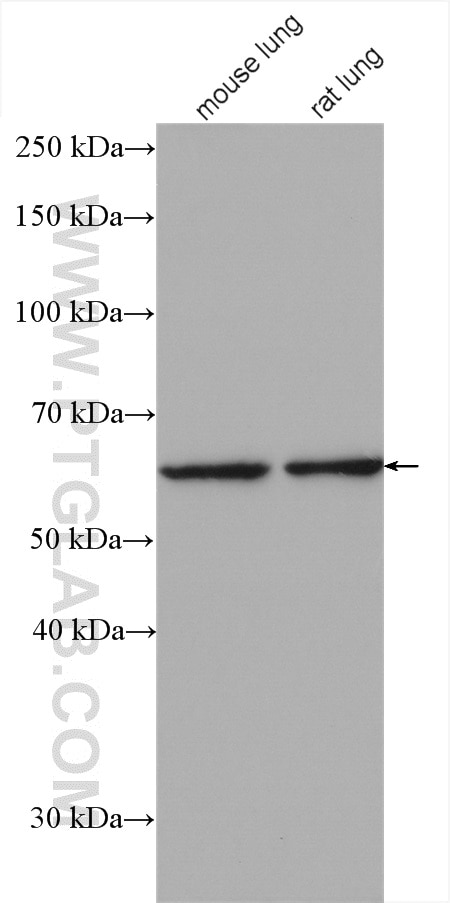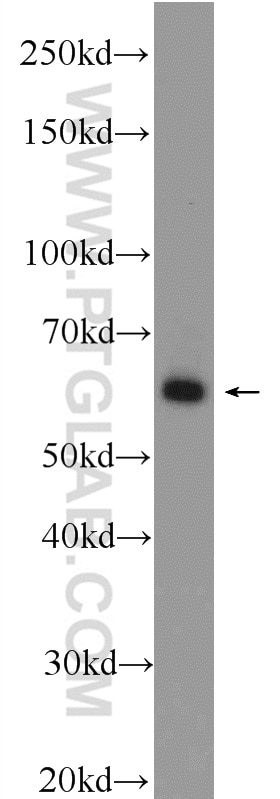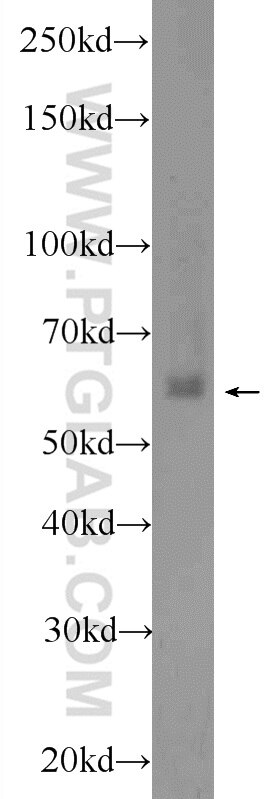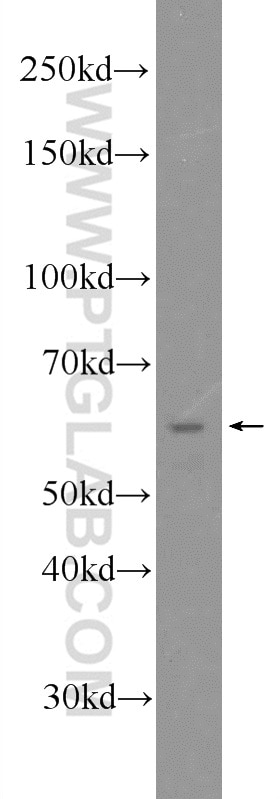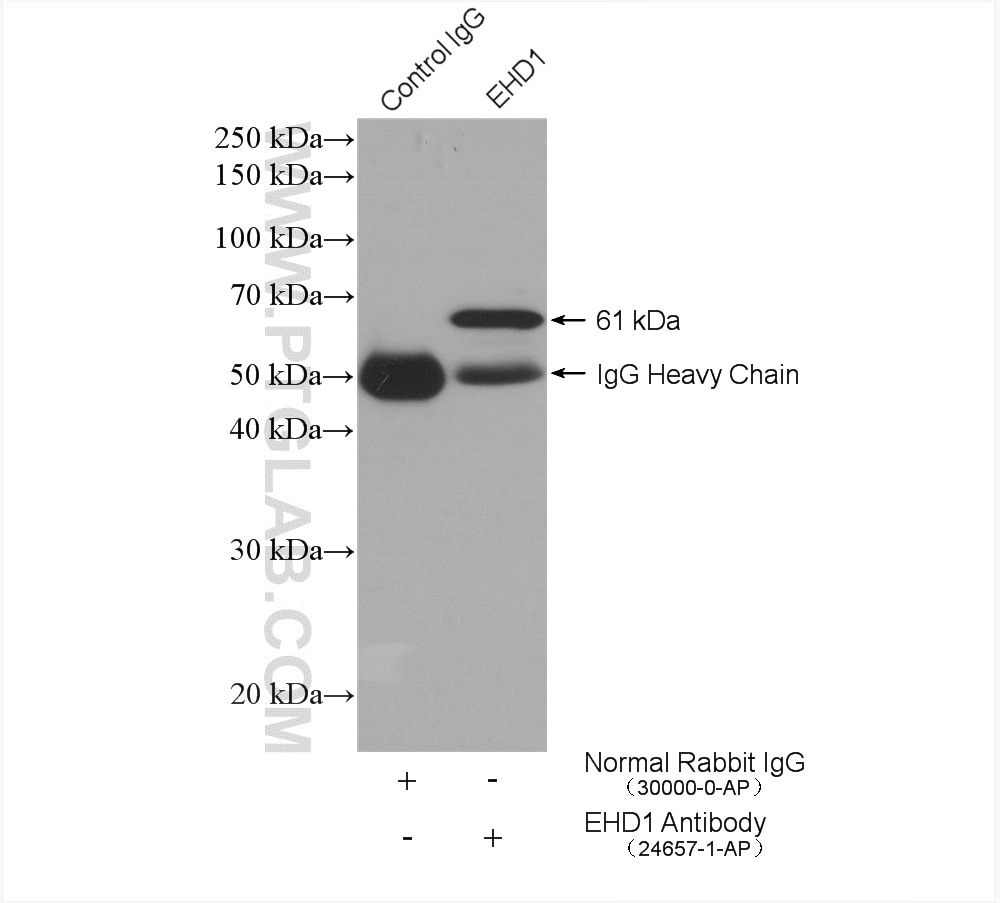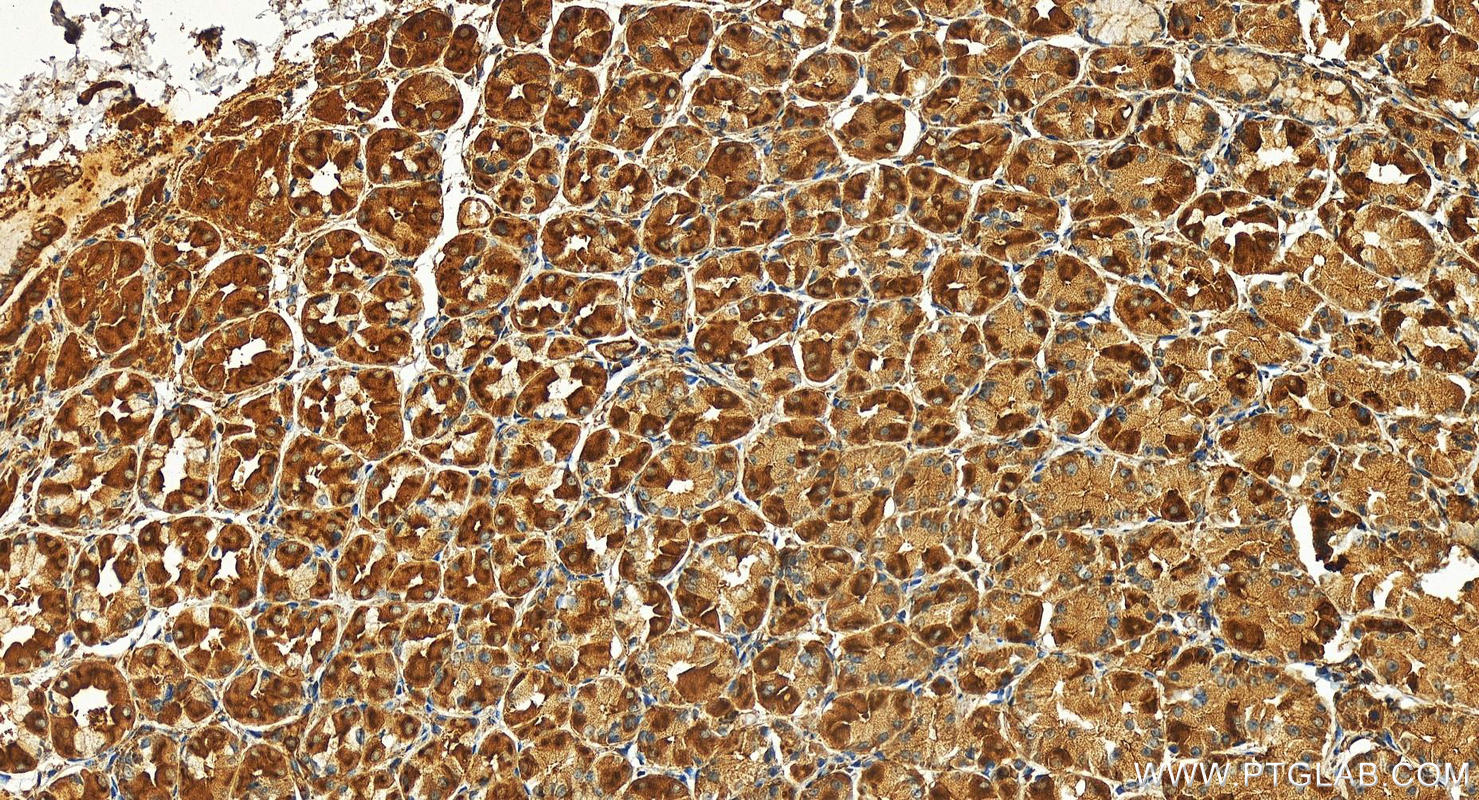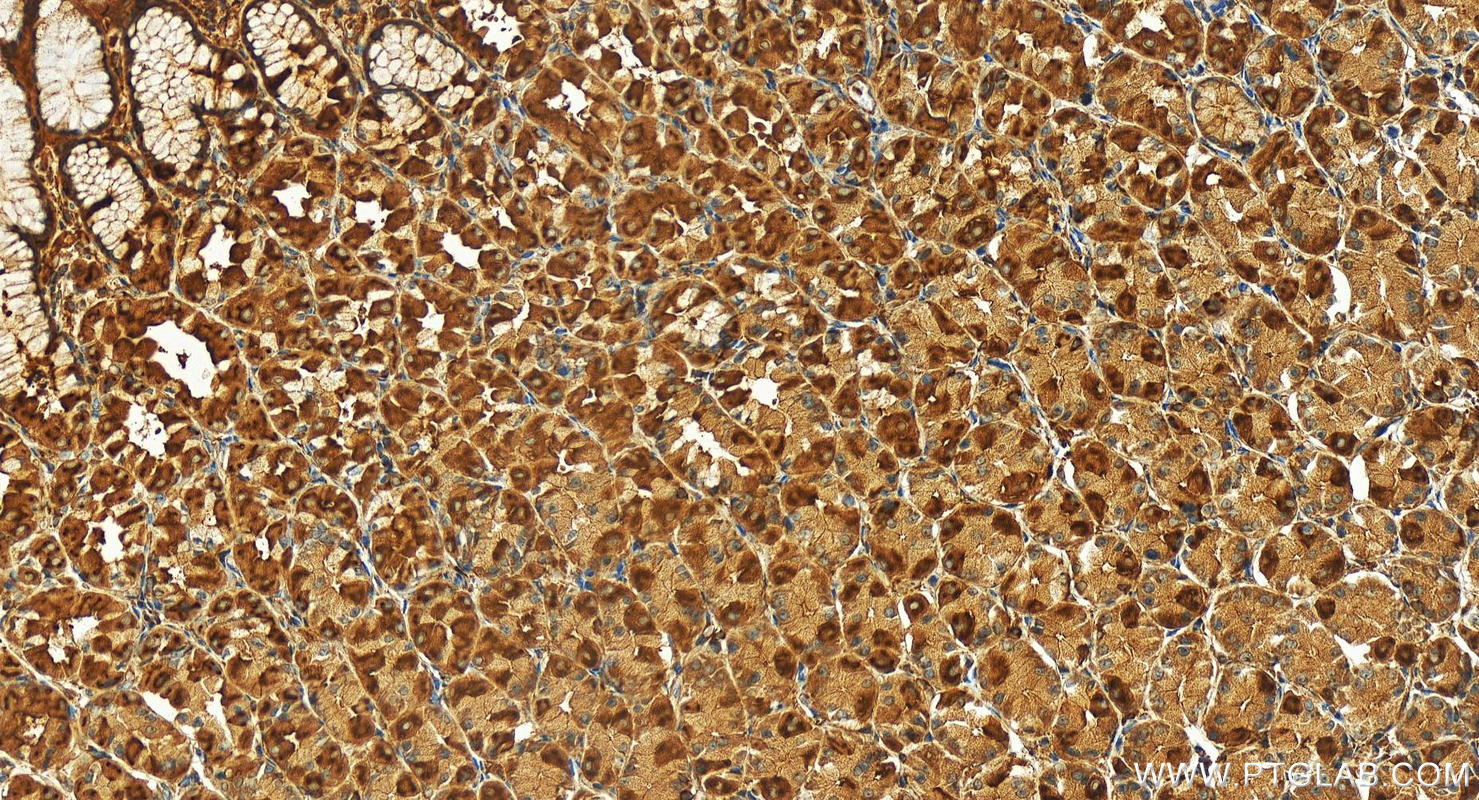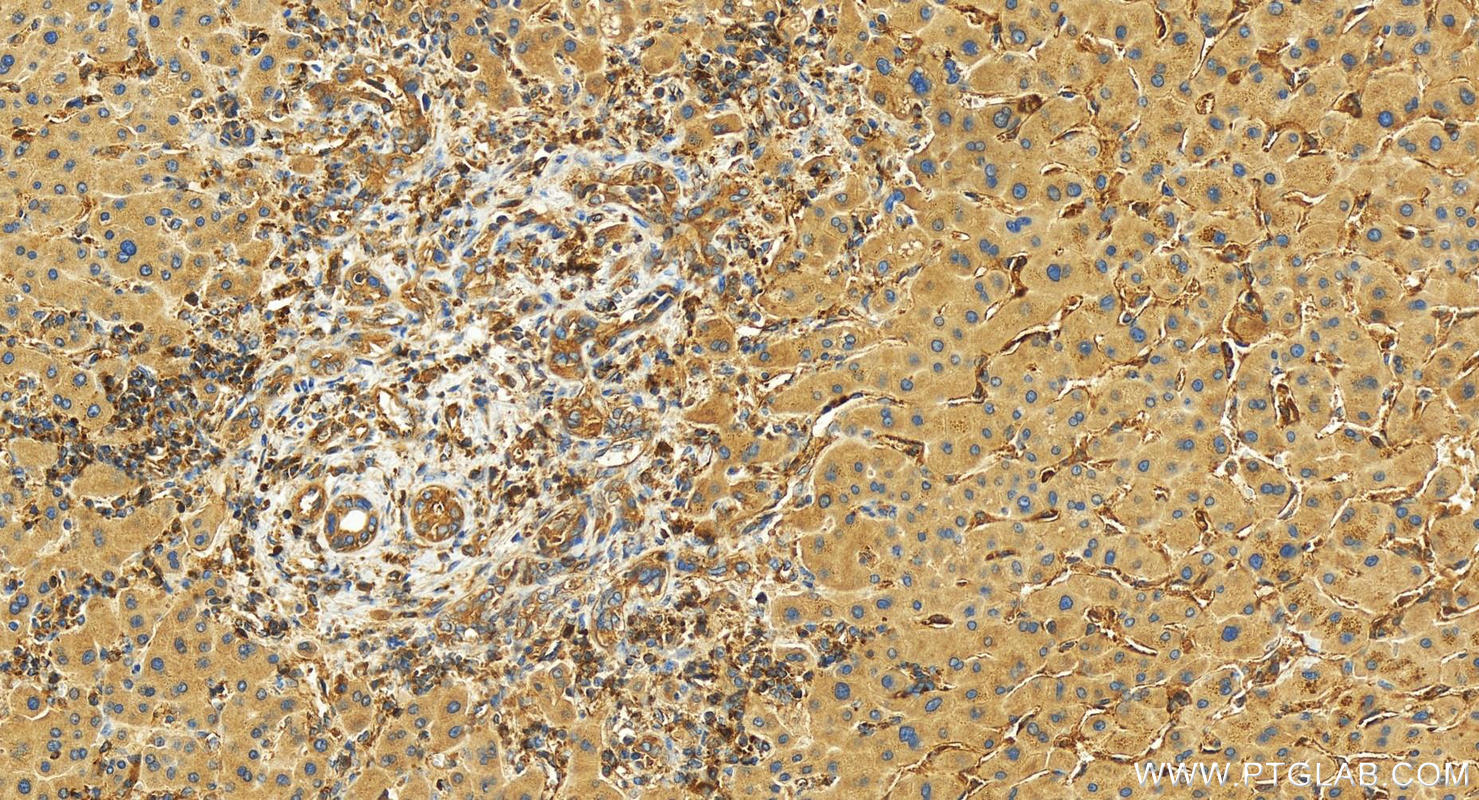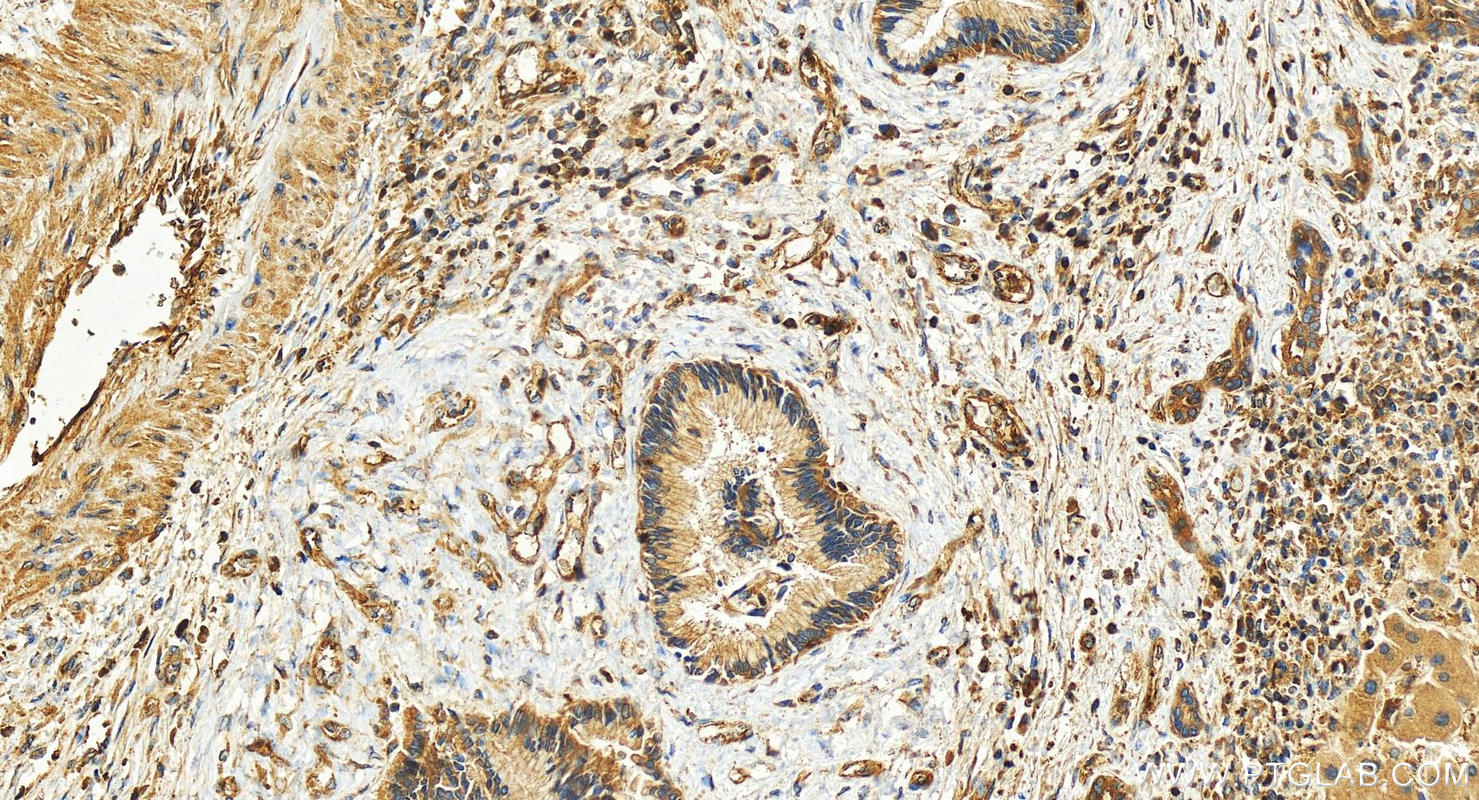- Featured Product
- KD/KO Validated
EHD1 Polyklonaler Antikörper
EHD1 Polyklonal Antikörper für WB, IHC, IP, ELISA
Wirt / Isotyp
Kaninchen / IgG
Getestete Reaktivität
human, Maus, Ratte
Anwendung
WB, IHC, IF, IP, ELISA
Konjugation
Unkonjugiert
Kat-Nr. : 24657-1-AP
Synonyme
Geprüfte Anwendungen
| Erfolgreiche Detektion in WB | Mauslungengewebe, HeLa-Zellen, Maushirngewebe, Maushodengewebe, Rattenlungengewebe |
| Erfolgreiche IP | Maushodengewebe |
| Erfolgreiche Detektion in IHC | humanes Magenkrebsgewebe, human intrahepatic cholangiocarcinoma tissue Hinweis: Antigendemaskierung mit TE-Puffer pH 9,0 empfohlen. (*) Wahlweise kann die Antigendemaskierung auch mit Citratpuffer pH 6,0 erfolgen. |
Empfohlene Verdünnung
| Anwendung | Verdünnung |
|---|---|
| Western Blot (WB) | WB : 1:1000-1:4000 |
| Immunpräzipitation (IP) | IP : 0.5-4.0 ug for 1.0-3.0 mg of total protein lysate |
| Immunhistochemie (IHC) | IHC : 1:50-1:500 |
| It is recommended that this reagent should be titrated in each testing system to obtain optimal results. | |
| Sample-dependent, check data in validation data gallery | |
Veröffentlichte Anwendungen
| KD/KO | See 3 publications below |
| WB | See 4 publications below |
| IHC | See 1 publications below |
| IF | See 2 publications below |
Produktinformation
24657-1-AP bindet in WB, IHC, IF, IP, ELISA EHD1 und zeigt Reaktivität mit human, Maus, Ratten
| Getestete Reaktivität | human, Maus, Ratte |
| In Publikationen genannte Reaktivität | human, Maus |
| Wirt / Isotyp | Kaninchen / IgG |
| Klonalität | Polyklonal |
| Typ | Antikörper |
| Immunogen | EHD1 fusion protein Ag18400 |
| Vollständiger Name | EH-domain containing 1 |
| Berechnetes Molekulargewicht | 534 aa, 61 kDa |
| Beobachtetes Molekulargewicht | 61 kDa |
| GenBank-Zugangsnummer | BC104799 |
| Gene symbol | EHD1 |
| Gene ID (NCBI) | 10938 |
| Konjugation | Unkonjugiert |
| Form | Liquid |
| Reinigungsmethode | Antigen-Affinitätsreinigung |
| Lagerungspuffer | PBS with 0.02% sodium azide and 50% glycerol |
| Lagerungsbedingungen | Bei -20°C lagern. Nach dem Versand ein Jahr lang stabil Aliquotieren ist bei -20oC Lagerung nicht notwendig. 20ul Größen enthalten 0,1% BSA. |
Hintergrundinformationen
EHD1 (Eps15 Homology Domain Containing 1) is a protein that plays a crucial role in endocytic recycling, which is the process by which cells recycle their membrane components. It is one of four paralogs in mammals (EHD1-4) and is involved in several membrane trafficking pathways. EHD1 is particularly well-studied and is known to regulate the recycling of various cell surface receptors back to the cell surface after they have been endocytosed. This process is essential for maintaining the proper distribution of receptors and other membrane proteins, which in turn affects cellular signaling and function. EHD1 has been implicated in the regulation of the transferrin receptor (TfR), major histocompatibility complex (MHC) class I proteins, β1 integrins, and other receptors. It has also been shown to interact with Rab11-FIP2 and is localized to peripheral endosomes, suggesting a role in the transport of receptors from early endosomes to the endocytic recycling compartment (ERC). Furthermore, EHD1 has been linked to dynein motors that drive transport from early endosomes to the ERC via a complex including MICAL-L1 and the collapsin response mediator protein-2 (Crmp2).
Protokolle
| PRODUKTSPEZIFISCHE PROTOKOLLE | |
|---|---|
| WB protocol for EHD1 antibody 24657-1-AP | Protokoll herunterladen |
| IHC protocol for EHD1 antibody 24657-1-AP | Protokoll herunterladenl |
| IP protocol for EHD1 antibody 24657-1-AP | Protokoll herunterladen |
| STANDARD-PROTOKOLLE | |
|---|---|
| Klicken Sie hier, um unsere Standardprotokolle anzuzeigen |
Publikationen
| Species | Application | Title |
|---|---|---|
EMBO J Insufficiency of ciliary cholesterol in hereditary Zellweger syndrome.
| ||
Sci Rep Rab35 and its effectors promote formation of tunneling nanotubes in neuronal cells.
| ||
Biochem Biophys Res Commun A novel CDK-independent function of p27Kip1 in preciliary vesicle trafficking during ciliogenesis. | ||
J Extracell Vesicles Breast Cancer-Derived Extracellular Vesicles Modulate the Cytoplasmic and Cytoskeletal Dynamics of Blood-Brain Barrier Endothelial Cells |
Rezensionen
The reviews below have been submitted by verified Proteintech customers who received an incentive for providing their feedback.
FH Olga (Verified Customer) (09-12-2025) | The blot is quite clear but a bit confusing that there are two bands in mouse cell lines and tissues.
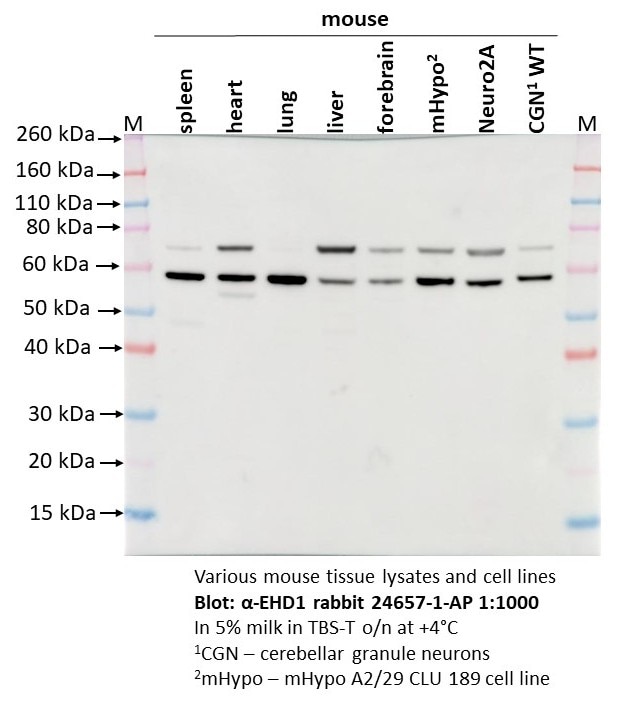 |
FH Kyosuke (Verified Customer) (06-12-2019) | I am working on thrombosis study. I use this for mouse platelet Western blot and it works very well.
|
FH Juan (Verified Customer) (05-02-2019) | It works well with a single band
|
